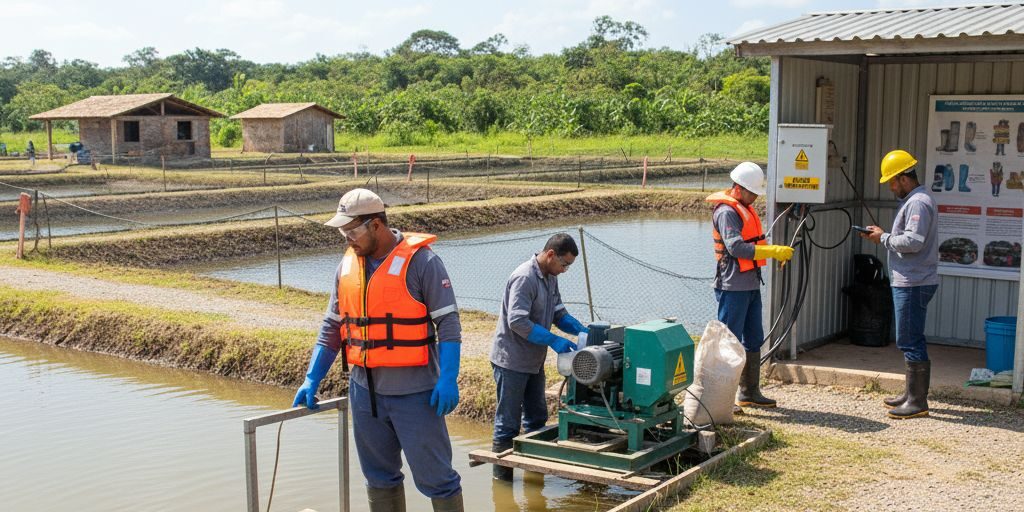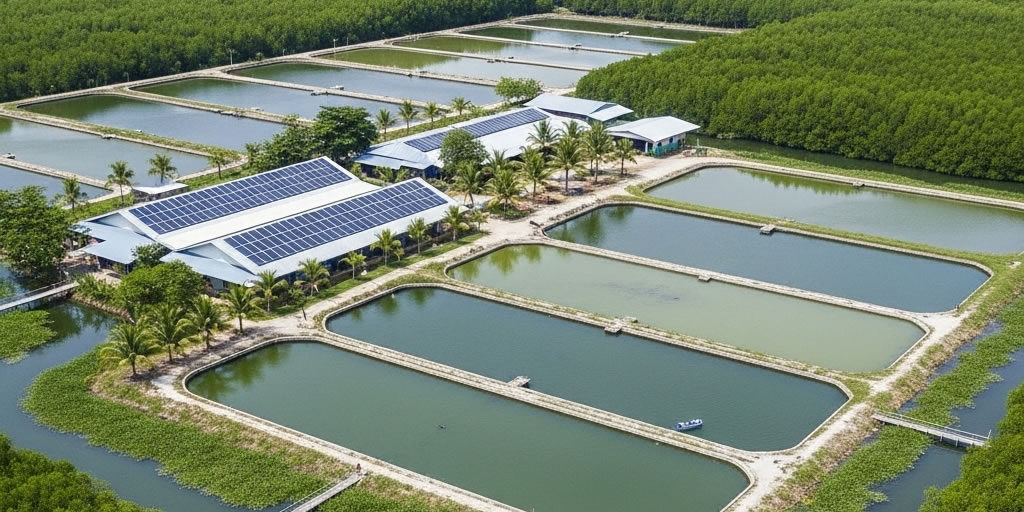- Software Gestor para Aquicultura
- (85) 2139-6730
- contato@despesca.com.br
Animal Transit Guide (GTA): Everything You Need to Know to Legally and Effectively Move and Receive Your Post-Larvae and Fingerlings

Blockchain in Aquaculture: The Technology that Ensures Full Traceability and Adds Value to Your Product
09/09/2025
Cost Per Kilo: Do You REALLY Know How Much It Costs to Produce Your Shrimp?
11/09/2025The acquisition of shrimp post-larvae and fish fingerlings represents one of the most critical and fundamental moments for the success of any production cycle in aquaculture. The genetic and sanitary quality of the initial batch is a pillar for good zootechnical performance. However, an aspect often treated as mere bureaucracy is the transport of these animals to the farm. The Animal Transit Guide (GTA), an official zoosanitary document in Brazil, is the tool that ensures the legality and, mainly, the traceability and sanitary control of this movement.
What is GTA and why is it important?
The Animal Transit Guide is a mandatory document for the transit of live animals, eggs, and other animal multiplication materials throughout the national territory. Issued by state agricultural defense agencies, the GTA’s main objective is the prevention and control of disease dissemination. For shrimp and fish farmers, demanding and checking the GTA upon the arrival of post-larvae and fingerlings is more than a legal obligation; it is an indispensable biosecurity measure. It ensures that the animals were produced in a legalized and inspected establishment, which follows current sanitary norms, minimizing the risk of introducing pathogens into your production.
How Does GTA Issuance Work for Post-Larvae and Fingerlings?
The GTA issuance process begins at the animals’ origin establishment, i.e., at the hatchery or fish farm supplier. The producer of young forms must be duly registered with their state’s sanitary defense agency and maintain their stock under strict sanitary control, with negative reports for the main notifiable diseases.
When making a sale, the supplier must access the defense agency’s computerized system and fill in the required information, such as sender and recipient data (including the destination farm’s registration), species, quantity of animals, means of transport, and route. The issuance of the guide proves that the movement is being carried out in compliance with the requirements of the National Aquatic Animal Health Program (PNSAc).
Producer Responsibilities Upon Receiving Animals
Responsibility for the legality of transport is shared. The producer receiving the post-larvae or fingerlings has a duty to demand the GTA from the transporter at the time of delivery. It is crucial to verify that the document’s data matches the received cargo (species, quantity) and that their property is correctly listed as the final destination. After receipt, the producer must “close” the GTA with the local defense agency, informing that the animals have arrived at their destination. This procedure is crucial for traceability, allowing that, in case of a disease outbreak, it is possible to quickly identify the origin and possible locations of dissemination.
Consequences of Transport Without GTA
Transporting or receiving aquatic animals without the proper GTA is a serious offense. Consequences range from the seizure and sacrifice of the cargo to the application of heavy fines for both the transporter and the producer. In addition to the immediate financial loss, the practice jeopardizes the entire sanitary status of the region, potentially leading to the interdiction of the property and the spread of diseases that impact the productivity of an entire production chain.
The Role of Technology in Document Management
Maintaining control over all incoming and outgoing documentation of an aquaculture farm, including GTAs, invoices, and sanitary reports, can be a challenge. Using management software, such as Despesca, centralizes and organizes this information efficiently. In the system, it is possible to record data for each batch received, attach a digital copy of the corresponding GTA, and link this information to the production cycle. This not only facilitates proof of the legality of your operations during an inspection but also creates a robust history that is valuable for zootechnical management and for obtaining quality certifications. By digitizing and organizing these records, the producer gains security, agility, and a solid database for strategic decision-making.




